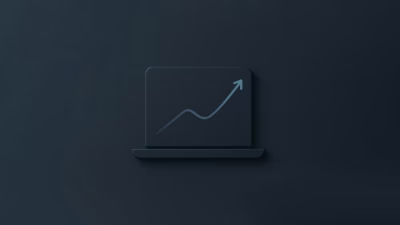So, you’re scrolling through job boards, reading through posts that all seem to ask for “entry-level” candidates with three years of experience, five different languages, and enough statistical intuition to rival Nate Silver. Sound familiar?
Let’s take a beat.
You’re trying to break into data science. You’ve taken courses, maybe built a project or two, and now you’re staring at job listings that feel like they weren’t written for humans—let alone beginners. You’re probably wondering: what the hell do hiring managers actually want?
Let’s demystify it. No buzzwords. No nonsense. Just a clear-eyed look at what makes a junior data scientist stand out—and what separates “nice-to-have” fluff from “we-need-this-yesterday” essentials.
They’re Not Looking for Unicorns
Here’s the honest truth: most hiring managers know that junior candidates aren’t full-stack machine learning engineers. They don’t expect you to be. In fact, when someone shows up with 10 side projects and no idea how to write a clean function, it’s a red flag.
What they’re actually looking for? Signal. Potential. Curiosity.
They want to know:
- Can you think clearly about data?
- Can you write code that doesn’t make your future teammates cry?
- Can you communicate your thinking in a way a stakeholder might understand?
If the answer is yes to even two of those, you’re already way ahead.
Let’s Talk About Skills (and Which Ones Actually Matter)
Alright, let’s break it down—but in plain language.
1. Python (or R) That Works
Notice I didn’t say “fluent in Python.” I said that works. What does that mean?
It means you can:
- Read in a dataset.
- Clean it without breaking everything.
- Run basic analysis.
- Write functions that don’t look like spaghetti.
Hiring managers don’t care if you’ve memorized list comprehensions or if your lambda usage is elegant. They care if you can solve real problems with basic tools. Pandas. NumPy. Maybe matplotlib or seaborn.
Even more important? That you understand what your code is doing. Debugging > memorization, always.
2. SQL, SQL, SQL
I’ve seen resumes stacked with TensorFlow projects… but no SQL.
Big mistake.
Most junior roles involve working with databases more than deep learning. Being able to write joins, filters, group-bys, and subqueries will land you more interviews than building a neural net on MNIST ever will.
And if you say you know SQL but stumble on a basic JOIN in an interview, trust me—they’ll notice.
Here’s a challenge: set up a small dummy database (SQLite works fine), and practice answering questions with intent. Don’t just write the query. Ask yourself: Why am I filtering this way? What assumption am I making?
3. A Portfolio That’s More Than Just Tutorials
This one’s subtle but powerful.
Hiring managers don’t need you to have ten GitHub repos. They need one or two projects that show you can think.
The real magic? Projects that feel real. Like:
- Analyzing your local city’s open data on traffic accidents.
- Building a simple dashboard showing Airbnb trends in your area.
- Digging into your own Spotify or YouTube history to find patterns.
Not sure what problem to solve? Find something that annoyed you last week and try to measure it. That’s data science.
And please—for the love of readable code—write a README that explains what you did, why, and what you learned. Bonus points if you explain it like you’re talking to a non-technical manager. Because guess what? You will be doing that in real life.
4. Communication That’s Not Just “Look at My Chart”
You don’t have to be a TED speaker. But you do need to be able to answer questions like:
- “What’s the takeaway here?”
- “Why does this matter for the business?”
- “What’s the next step?”
That means in interviews, don’t just rattle off the techniques you used. Instead, say things like:
“I started with exploratory analysis to understand the distribution. I noticed outliers around X, which I confirmed by plotting Y. Based on that, I decided to…”
See the difference? You’re not showing off knowledge. You’re showing process.
That’s gold.
Soft Skills Aren’t Fluff (and Yes, They Matter)
You might be tired of hearing about “soft skills.” But here’s the deal: data science lives in the real world. That means:
- You’ll have stakeholders who don’t understand your jargon.
- You’ll work on messy teams with competing priorities.
- You’ll need to ask good questions when requirements are vague.
Managers look for juniors who can say things like:
- “Can you help me understand the goal here?”
- “What decision will this analysis inform?”
- “Do we care more about precision or recall in this case?”
Not because you’re an expert—but because you’re thinking like one.
The Interview Isn’t an Exam. It’s a Window.
Let’s get real about interviews. They’re not just about passing a test. They’re how a manager answers one question:
“Can I trust this person to handle a problem, ask for help when needed, and grow without constant hand-holding?”
So if you hit a question you don’t know? Say that. But think out loud.
Something like:
“I’m not sure of the exact syntax here, but I’d approach it by… and I’d check the documentation or test a small example.”
That tells the manager: you’re resourceful. You don’t panic. You’re teachable.
That’s way more impressive than pretending you know everything.
Okay, But What About All Those Job Descriptions?
Ah yes, the classic 35-point list of “must-haves.”
Here’s what you need to know: those are wish lists, not checklists. If you meet 60–70% of the requirements—and especially the ones that keep coming up like Python, SQL, and analysis—go ahead and apply.
Hiring managers often say they’d rather train a smart junior with good fundamentals than hire someone who ticks all the boxes but can’t think critically.
So don’t self-reject. Let them say no. You’d be surprised how often they say yes.
My First Junior Data Role? It Wasn’t What I Expected.
Quick story.
My first data job wasn’t called “Data Scientist.” It was “Business Analyst,” and I spent a lot of time in Excel. But I used Python when no one else did, built a few tools to automate reports, and kept asking “why” until someone said, “you think like a data scientist.”
Six months later, I was working on product analytics, running A/B tests, and writing SQL for breakfast.
The title didn’t matter. The work did.
Moral of the story? Don’t obsess over getting “the perfect role.” Focus on getting in the room, learning like mad, and solving real problems.
tl;dr – Here’s What Actually Stands Out
If you’re a junior data scientist trying to get noticed, here’s the no-BS checklist:
- Basic Python (clean, readable, and functional)
- Solid SQL (seriously—don’t skip this)
- One or two thoughtful projects that show real-world thinking
- Clear communication of process, not just results
- Curiosity and humility in interviews (“Here’s how I’d figure that out…”)
- Soft skills that show you can collaborate, ask questions, and learn fast
Forget the rest for now. You’ll learn Spark. You’ll mess with ML models. You’ll pick up Docker, Airflow, or whatever else comes your way.
But start with the fundamentals.
And remember—hiring managers aren’t looking for perfect. They’re looking for someone they’d actually want to work with at 9 a.m. on a Tuesday when the dashboard’s broken, the metrics don’t make sense, and someone from marketing is breathing down your neck.
Be that person.
You’ve got this.





